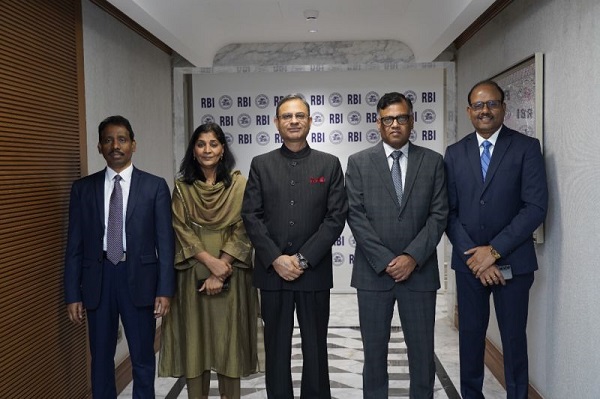.png)
Why “Opposites Attract” Feels So Good, But Isn’t the Whole Story
Does love really thrive on opposites, or do lasting bonds depend on shared values and quiet alignment that outlasts the first spark of difference?

Kalyani Srinath, a food curator at www.sizzlingtastebuds.com, is a curious learner and a keen observer of life.
September 7, 2025 at 5:56 AM IST
It is one of those phrases that has entered the bloodstream of culture: opposites attract. Familiar and unquestioned, it hangs in the air like casual wisdom, repeated in movies, in novels, in conversations over coffee. And it does have a certain sparkle. Something intoxicating occurs when someone so unlike the familiar shows up, when two people different in pace, habits, or temperaments meet and suddenly collide in a way that feels alive. The detail-oriented perfectionist dazzled by a spontaneous dreamer; the guarded listener drawn to someone who speaks their truth without filter; the quiet thinker pulled into orbit by laughter that refuses to be contained.
Those first moments glow with an impossible fire, like a novel beginning in the middle of a cliffhanger. It feels cinematic because it is cinematic. Contrast draws attention; difference unsettles routine; the unfamiliar lures because it promises not just another person, but another way of being.
Yet beneath the shimmer lies a quieter reality: attraction is not endurance. Sparks are not permanence. And opposites, though magnetic in brief, often carry fault lines beneath the beauty.
Contrast Versus Continuity
In the beginning, contrast is exhilarating. The quiet one finds energy from the bold. The cautious one admires courage in the reckless. Everyone loves novelty. There’s something thrilling about seeing life refracted through another person’s wildly different lens. For a season, that season sparkles.
But when novelty becomes daily life, differences that once charmed can turn into cracks. That same spontaneity once intoxicating becomes irresponsibility. That same caution once admired becomes frustrating hesitation. Extroversion grows exhausting; introversion feels like suffocation.
It is not cynicism to admit this, only observation. The excitement of clash rarely holds against the demand of continuity. Living alongside another person is not performance, not a highlight reel, but a long stretch of ordinary hours—bank statements, late nights, holidays, sicknesses, tiny kindnesses, and everyday frustrations.
Difference entertains. Similarity sustains.
Think back to bonds that have lasted the longest. The childhood friend who resurfaces after years and conversation flows as easily as ever. The sibling who understands grief without need for explanation. The colleague trusted because their sense of honesty aligns instinctively with what honesty means to you. These are not people who stand in opposition; they are people who, in the marrow of values, reflect something steady, something safe.
Human nature is built to long for such resonance. It is not about sameness in taste or habit. Two people can argue about music, or solve problems differently, or decorate homes in opposite styles. These surface differences are flavour. What binds is far deeper: the shared moral compass, the aligned outlook on life, the meaning placed on words like loyalty, love, or forgiveness.
Psychologists speak of this as “similarity” or “mental alignment.” It means less stress, smoother communication, easier trust. A study of newlyweds found that it was not complementarity that predicted happiness, but resemblance—values standing shoulder to shoulder, even when personalities pulled in unique directions.
Consider the difference in how this plays out. A couple that shares a worldview can weather arguments; beneath tension lies the confidence they want the same kind of life. A friendship built on shared definitions of care survives distance and silence because both understand what matters most. Even in workplaces, the strongest teams are not built of pure oppositions, but of common threads: integrity valued in the same way, excellence held to the same standard.
This explains why so many connections that feel sparkling at first can fracture later. The quiet magic that outlasts attraction is not found in the novelty of being mirrored by the opposite, but in the comfort of resonance. It is the difference between firework and flame: one astonishes brightly then vanishes; the other burns slowly yet carries warmth through the night.
The Myth Blinds
But drama is not destiny. What looks thrilling on screen becomes wearying when the credits never roll.
The couple who can never agree on how to spend holidays. The friends who burn out trying to interpret one another’s vastly different expectations of loyalty. The business partners with opposite visions of what success means.
Difference without shared ground is heavy. Constant negotiation, constant translation, constant explaining why something matters when the other does not see it the same way. Without shared beliefs, the very foundation erodes. Love may remain, but love without rhythm becomes labour, and not the kind that bonds, the kind that slowly breaks.
The phrase might need rewriting. It is not that opposites cannot be drawn to each other. Of course they can. The pull of difference will always exist. But the truth, less glamorous though infinitely more enduring, is this: likeness draws closer, likeness comforts, likeness sustains.
The most meaningful connections across lifetimes reveal this. A parent and child holding wildly different jobs yet living with the same compass of kindness. Two lifelong friends laughing about wildly different hobbies yet agreeing instinctively on what truly matters. Partners who argue fiercely about trivial details but collapse into the same shared understanding of justice, loyalty, or compassion.
It is here, in these enduring bonds, that the deepest emotional nourishment lives. The spark of contrast may catch fire, but it is the steady burn of alignment that keeps the house warm.
So perhaps the story should not be discarded, just reframed. Opposites may attract, but attraction is only the prologue, never the whole book. The richer, quieter chapters are written on common ground.
Look at the circle of people who remain through the years. Rarely will they be opposites to the core. More often, beneath different expressions and contrasting flavours of life, they are bound by threads of likeness invisible to the eye. Threads of belief, meaning, value. Threads that hum an old, familiar song.
Because in the end, difference may invite you in, but sameness keeps you home.



